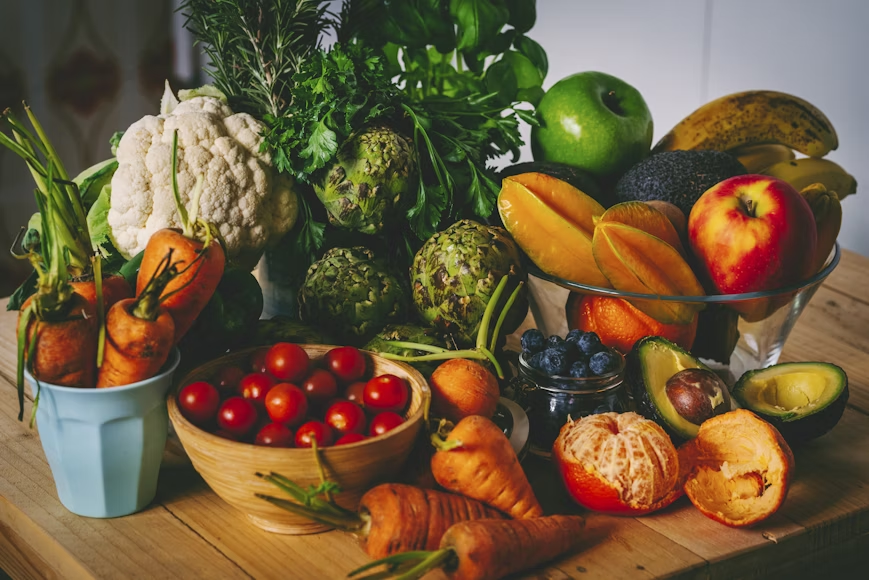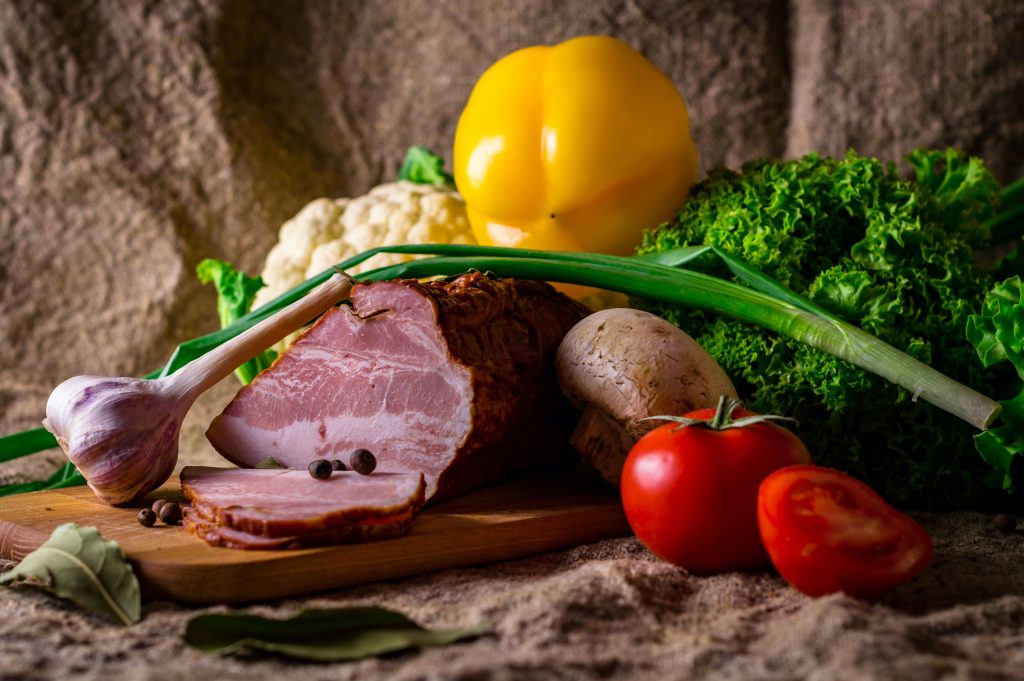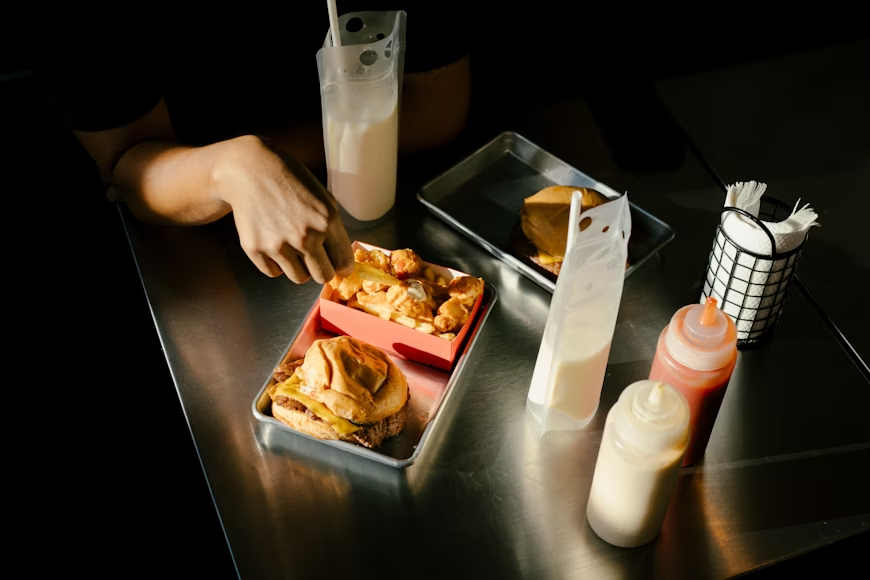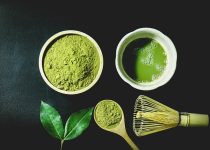
What Are the Benefits of Dash Diet & Why Do Dietitians Recommend It?
High blood pressure is often called the “silent killer,” and for good reason.
Do you know that almost half of the adults living in the United States struggle with hypertension? It’s a condition that damages your arteries & ultimately increases your risk of heart attack.
What’s even scarier? People tend to learn about it when it’s already too late.
This is where the DASH diet (Dietary Approaches to Stop Hypertension) comes in.
Backed by research from the National Institute of Health, this eating plan isn’t just another passing trend; it’s a scientifically proven strategy designed to reduce your blood pressure.
Moreover, this diet is perfect for individuals who want to support good heart health & an improved overall well-being.
It’s no secret why dietitians worldwide recommend it as a life-saving choice.
In this article, I will tell you what a DASH diet is and how it controls your blood pressure.
So without further ado, let’s read everything about it.
What is a DASH Diet?

The term DASH diet is an abbreviation for Dietary Approaches to Stop Hypertension.
Interestingly, the term was first coined in the 1990s through research funded by the National Institute of Health (NIH). The purpose of the diet was to help people naturally lower their high blood pressure (hypertension).
At that time, many dietitians wanted their patients to come off blood pressure medications.
Therefore, the DASH diet was the perfect natural solution to help people overcome their hypertensive states.
The main goal of eating a DASH diet is to eat a diet rich in fruits, vegetables, whole grains, lean proteins (like fish and poultry), nuts, and low-fat dairy products. Such diets reduce sodium, added sugars, red meat & saturated fats from the daily intake. Instead, it replaced these food choices with food high in potassium, calcium, magnesium, and fiber—all nutrients that help regulate blood pressure. By cutting sodium and unhealthy fats, dietitians reduced the strain on the inner workings of the heart & arteries.
In fact, a few good studies showed how people who followed the DASH diet lowered their blood pressure in just under 2 weeks.
Furthermore, over the long term, it significantly reduced the risk of heart disease in many of these patients.
Think of the DASH diet as a balanced & flexible eating plan, one that doesn’t cut entire food groups such as keto or paleo.
Instead, it focuses on moderation & making healthy swaps.
Foods You Can Eat on Dash Diet
1. Fruits (4–5 servings/day)
- Apples, bananas, oranges, pears, berries, grapes
- Melons (cantaloupe, watermelon)
- Citrus fruits (grapefruit, tangerines)
- Dried fruits (raisins, apricots, dates — in moderation)
2. Vegetables (4–5 servings/day)
- Leafy greens (spinach, kale, collard greens, lettuce)
- Cruciferous veggies (broccoli, cauliflower, Brussels sprouts)
- Carrots, beets, sweet potatoes
- Tomatoes, cucumbers, zucchini, peppers
3. Whole Grains (6–8 servings/day)
- Whole wheat bread, brown rice, quinoa, oats, bulgur, barley
- Whole wheat pasta, whole grain cereal, tortillas
4. Lean Protein (≤ 6 servings/day)
- Skinless chicken, turkey
- Fish (salmon, tuna, mackerel, trout)
- Lean cuts of beef or pork (in moderation)
- Eggs (in moderation)
5. Low-Fat or Fat-Free Dairy (2–3 servings/day)
- Skim or 1% milk
- Low-fat yogurt
- Low-fat cheese
6. Nuts, Seeds & Legumes (4–5 servings/week)
- Almonds, walnuts, pistachios, peanuts
- Sunflower seeds, pumpkin seeds, flaxseeds
- Beans (kidney beans, black beans, chickpeas, lentils, split peas)
7. Healthy Fats & Oils (2–3 servings/day)
- Olive oil, canola oil, sunflower oil
- Avocados
8. Sweets (≤ 5 servings/week — in moderation)
- Dark chocolate, honey, jam, fruit sorbets
- Small amounts of cookies or cake (preferably homemade/low-fat)
Foods to Limit or Avoid When You’re on DASH Diet

- High-sodium foods (canned soups, processed snacks, deli meats, frozen meals)
- Sugary drinks (soda, fruit juices with added sugar, energy drinks)
- Excessive red meat (especially fatty cuts)
- Saturated & trans fats (butter, fried foods, packaged baked goods)
- Excessive alcohol
A Comprehensive 7-Day DASH Diet Meal Plan
Day 1
- Breakfast: Oatmeal topped with banana slices + a handful of walnuts + skim milk
- Snack: Apple + a tablespoon of peanut butter
- Lunch: Grilled chicken breast + quinoa salad (with cucumbers, tomatoes, olive oil, lemon)
- Snack: Low-fat yogurt + mixed berries
- Dinner: Baked salmon + steamed broccoli + roasted sweet potato
- Optional treat: 2 squares of dark chocolate
Day 2
- Breakfast: Whole grain toast + scrambled eggs + avocado slices
- Snack: Carrot sticks + hummus
- Lunch: Turkey wrap (whole wheat tortilla, lean turkey, spinach, peppers, low-fat cheese)
- Snack: Handful of almonds + an orange
- Dinner: Lentil soup + side salad + whole wheat pita bread
Day 3
- Breakfast: Low-fat Greek yogurt + granola + blueberries
- Snack: Pear + sunflower seeds
- Lunch: Grilled tilapia + brown rice + roasted zucchini
- Snack: Celery sticks + cottage cheese
- Dinner: Stir-fried tofu + mixed vegetables (broccoli, bell peppers, snap peas) + soba noodles
Day 4
- Breakfast: Smoothie (spinach, banana, berries, low-fat milk, flaxseeds)
- Snack: Handful of pistachios + apple slice
- Lunch: Baked chicken + bulgur wheat + roasted carrots
- Snack: Low-fat cheese stick + cucumber slices
- Dinner: Grilled shrimp + quinoa + asparagus
Day 5
- Breakfast: Whole grain waffles + strawberries + drizzle of honey
- Snack: Yogurt + pumpkin seeds
- Lunch: Black bean salad (beans, corn, avocado, tomatoes, lime dressing) + whole grain crackers
- Snack: Grapes + handful of walnuts
- Dinner: Baked trout + mashed sweet potato + green beans
Day 6
- Breakfast: Scrambled egg whites + whole grain toast + tomato slices
- Snack: Banana + peanut butter
- Lunch: Chickpea curry + brown rice + spinach salad
- Snack: Low-fat yogurt + peach slices
- Dinner: Grilled turkey burger (whole wheat bun, lettuce, tomato) + side of roasted Brussels sprouts
Day 7
- Breakfast: Overnight oats (rolled oats, chia seeds, almond milk, topped with mango)
- Snack: Handful of mixed nuts + tangerine
- Lunch: Baked cod + quinoa tabbouleh (parsley, cucumber, tomato, lemon)
- Snack: Cottage cheese + pineapple chunks
- Dinner: Grilled chicken stir-fry + brown rice + mixed vegetables
Tips to Make DASH Diet Work For You
Hydration
Water is your best friend on the DASH diet. Aim for at least 8 glasses a day to keep your body energized and your digestion smooth. Herbal teas like green tea, peppermint, or chamomile are also great low-calorie choices that add variety without sugar. Try to limit soda, fruit juices with added sugar, and energy drinks — they sneak in empty calories and can counteract the benefits of the plan. If you miss flavor, infuse your water with lemon, cucumber, or fresh berries.
Sodium Control
One of the biggest goals of the DASH diet is cutting back on salt. That means choosing fresh ingredients whenever possible and looking for “low-sodium” or “no salt added” labels on canned beans, soups, and broths. Cooking at home gives you control over seasoning — swap out the salt shaker for herbs, spices, garlic, lemon, or vinegar to add flavor without the extra sodium. Over time, your taste buds actually adjust, and you’ll find yourself craving less salt naturally.
Food Swaps for Variety
Eating the same foods every day can get boring, so keep it flexible. Rotate your protein sources — switch between chicken, fish, lean beef, eggs, beans, or tofu. Whole grains can also be swapped easily: try quinoa instead of rice, or oats instead of cereal. Even snacks can be mixed up — instead of nuts every day, alternate with hummus and veggies, fruit with yogurt, or roasted chickpeas. This not only keeps meals exciting but also ensures you’re getting a wide range of nutrients.
Smart Snacking
Snacks are where many people slip up, but DASH encourages balance. Instead of grabbing chips or cookies, pair a fruit or veggie with something high in protein or fiber. For example, apple slices with peanut butter, carrots with hummus, or Greek yogurt with berries. This combination helps you stay full longer, stabilizes blood sugar, and reduces the urge for unhealthy cravings later in the day. Think of snacks as mini-meals that fuel your body instead of fillers.
How does the DASH diet work to prevent chronic disease?
The DASH (Dietary Approaches to Stop Hypertension) diet works by promoting foods that are rich in minerals known to lower blood pressure, such as potassium, calcium, and magnesium, while limiting foods high in sodium, saturated fat, and added sugars. This eating pattern reduces blood pressure, improves heart health, reduces diabetes risk, and supports healthy weight management.
Are eggs allowed on the DASH diet?
Yes, eggs are allowed on the DASH diet. They are a great source of high-quality protein and fit into the “lean meats, poultry, and fish” category. The key is moderation. A typical recommendation is up to one whole egg per day. You can also use egg whites more freely if you are concerned about dietary cholesterol.
Can I eat rice on a DASH diet?
Yes, you can eat rice on the DASH diet, but it’s highly recommended to choose brown rice over white rice. Brown rice is a whole grain, which means it contains more fiber, magnesium, and other important nutrients that support the diet’s goals. The DASH diet emphasizes whole grains for their role in heart health and blood sugar control. A serving is typically a half-cup, cooked.
What is the best breakfast for a DASH diet?
The best DASH diet breakfast combines several food groups to provide sustained energy and nutrients. A great formula is a whole grain + a fruit + a low-fat dairy or lean protein.
Some excellent examples include:
- Oatmeal (a whole grain) made with low-fat milk (dairy) and topped with berries (fruit) and a sprinkle of nuts (healthy fat/protein).
- Whole-wheat toast (whole grain) with a side of scrambled egg whites (lean protein) and a sliced orange (fruit).
- Low-fat Greek yogurt (dairy/protein) mixed with sliced peaches (fruit) and a tablespoon of whole-grain granola.
What are the best snacks on the DASH diet?
The best snacks are whole foods that are low in sodium and rich in nutrients. These snacks can work like mini-meals which helps you meet your daily fruit, vegetable and dairy goals. A few ideal choices may include a piece of fruit such as apple, banana, or a handful of grapes. A small container of low-fat or fat-free yogurt. A handful of unsalted nuts or seeds such as almonds or sunflower seeds. Vegetable sticks such as carrots, celery, bell peppers and more with a small amount of hummus.
Final Word
The DASH Diet is much more than just your regular meal plan for reducing blood pressure. It’s more of a blueprint, a healthier outlook towards living a vibrant and fulfilling life. When you emphasize the use of nutrient-rich whole foods such as fruits, vegetables, whole grains, and lean protein, you can have a sustainable eating habit. This flexible approach towards eating doesn’t rely on extreme restrictions, but instead on a ‘diet’ where you’re making a positive lifestyle shift which nourishes your body.
As we’ve seen, its benefits extend beyond heart health to help manage weight, reduce diabetes risk, and improve overall well-being. So, whether you’re actively trying to manage hypertension or simply aiming to invest in your long-term health, the DASH diet provides a scientifically proven, dietitian-approved path forward. By making these simple, smart food choices, you empower yourself to take control of your health and build a foundation for a stronger, healthier future.


